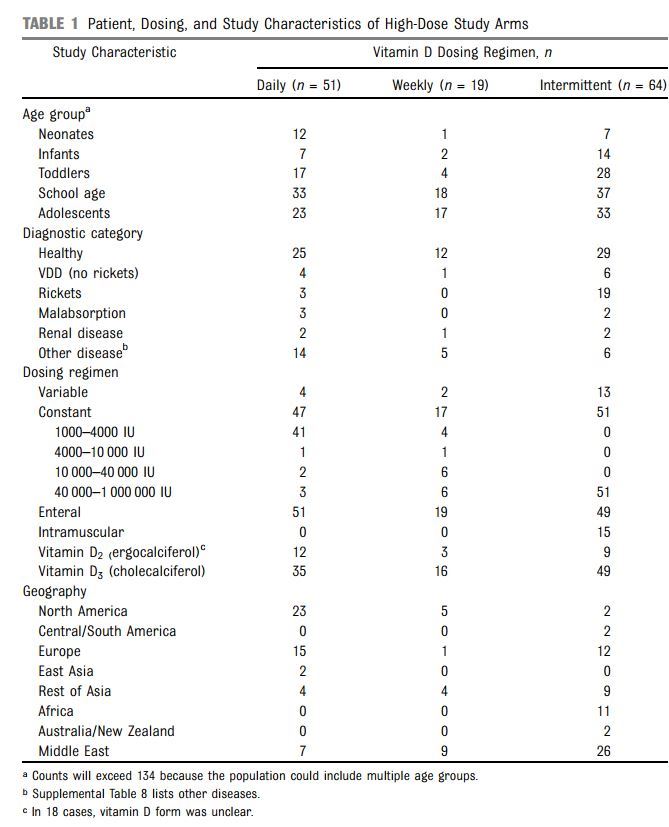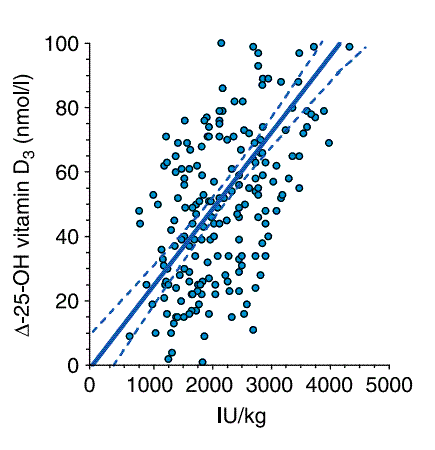Vitamin D loading doses of up to 400,000 IU OK for adolescents – meta-analysis
Rapid Normalization of Vitamin D Levels: A Meta-Analysis
Pediatrics Published online December 15, 2014, (doi: 10.1542/peds.2014-1703))
J. Dayre McNally, MD, PhDa,b, Klevis Iliriani, BSc (Hons)b,c, Supichaya Pojsupap, MDa,d, Margaret Sampson, MLIS, PHD, AHIPa, Katie O’Hearn, R Kin, MSca,b, Lauralyn McIntyre, MD, MSc, FRCPCe, Dean Fergusson, MHA, PhDf, and Kusum Menon, MD, MSca,b
A Department of Pediatrics, Faculty of Medicine, University of Ottawa, Children’s Hospital of Eastern Ontario, Ottawa, Ontario, Canada;
B Research Institute, Children’s Hospital of Eastern Ontario, Ottawa, Ontario, Canada;
C School of Medicine, Trinity College, Dublin, Ireland;
D Division of Critical Care, Department of Pediatrics, Phramonghutklao Hospital, Bangkok, Thailand; and
E Division of Critical Care, Department of Medicine, and
F Department of Epidemiology and Community Medicine, Ottawa Hospital Research Institute, University of Ottawa, Ottawa, Ontario, Canada
All Studies

Hypocalcemia

Daily high dose of 1,000 to 4,000 IU
which is less than IoM upper limit of 4,000 IU

BACKGROUND: Vitamin D deficiency may represent a modifiable risk factor to improve outcome in severe illness. The efficacy of high-dose regimens in rapid normalization of vitamin D levels is uncertain.
METHODS: We conducted a systematic review of pediatric clinical trials administering high-dose vitamin D to evaluate 25-hydroxyvitamin D (25[OH]D) response and characteristics associated with final 25(OH)D levels by using Medline, Embase, and the Cochrane Central Register of Controlled Trials, including reference lists of systematic reviews and eligible publications. Uncontrolled and controlled trials reporting 25(OH)D levels after high-dose (≥1000 IU) ergocalciferol or cholecalciferol were selected. Two reviewers independently extracted and verified predefined data fields.
RESULTS: We identified 88 eligible full-text articles. Two of 6 studies that administered daily doses approximating the Institute of Medicine’s Tolerable Upper Intake Level (1000–4000 IU) to vitamin D–deficient populations achieved group 25(OH)D levels >75 nmol/L within 1 month.
Nine of 10 studies evaluating loading therapy (>50 000 IU) achieved group 25(OH)D levels >75 nmol/L. In meta-regression, baseline 25(OH)D, regimen type, dose, age, and time factors were associated with final 25(OH)D levels. Adverse event analysis identified increased hypercalcemia risk with doses >400 000 IU, but no increased hypercalcemia or hypercalciuria with loading doses <400 000 IU (or 10 000 IU/kg) . Few studies in adolescents evaluated loading dose regimens >300 000 IU.
CONCLUSIONS: Rapid normalization of vitamin D levels is best achieved by using loading therapy that considers disease status, baseline 25(OH)D, and age (or weight). Loading doses >300 000 IU should be avoided until trials are conducted to better evaluate risk and benefit.
📄 Download the PDF from VitaminDWiki
See also VitaminDWiki
Rapidly restore Vitamin D levels with 10,000 IU per kg for children in ICU – RCT 2024
Vitamin D restored in teens by doses totalling 300,000 IU – Nov 2014
Vitamin D supplementation protocols: loading, injection, etc – RCT June 2014
600,000 IU of vitamin D2 every 4 months for decades in East Germany – 1987 loading doses given to all infants for decades
Overview Loading of vitamin D contains the following
{include}
has a chart showing the huge variation in response to a loading dose

Note: study on this page suggests 10,000 IU/kg
(Chart only goes up to 5,000 IU/kg)
